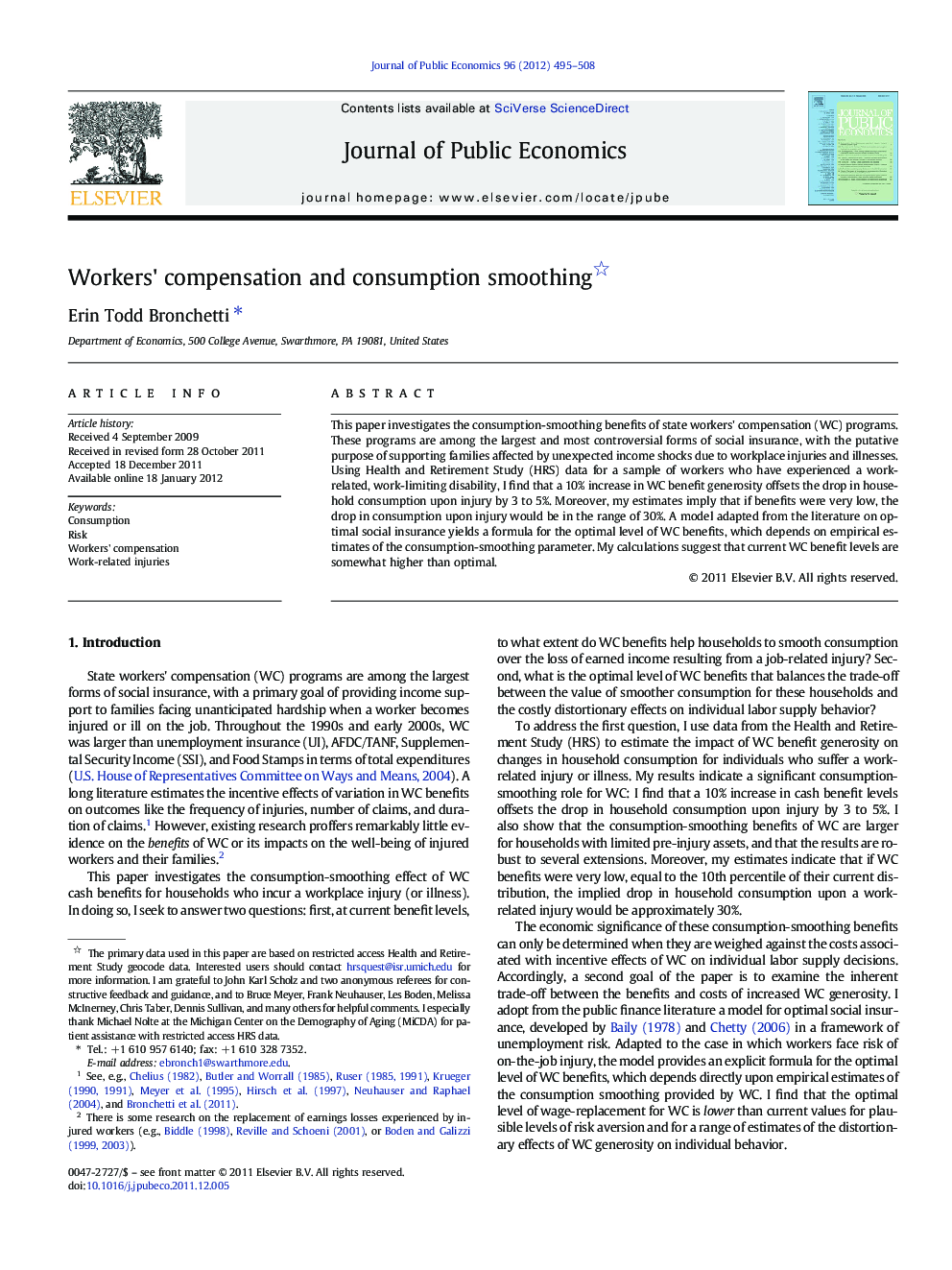| Article ID | Journal | Published Year | Pages | File Type |
|---|---|---|---|---|
| 969755 | Journal of Public Economics | 2012 | 14 Pages |
This paper investigates the consumption-smoothing benefits of state workers' compensation (WC) programs. These programs are among the largest and most controversial forms of social insurance, with the putative purpose of supporting families affected by unexpected income shocks due to workplace injuries and illnesses. Using Health and Retirement Study (HRS) data for a sample of workers who have experienced a work-related, work-limiting disability, I find that a 10% increase in WC benefit generosity offsets the drop in household consumption upon injury by 3 to 5%. Moreover, my estimates imply that if benefits were very low, the drop in consumption upon injury would be in the range of 30%. A model adapted from the literature on optimal social insurance yields a formula for the optimal level of WC benefits, which depends on empirical estimates of the consumption-smoothing parameter. My calculations suggest that current WC benefit levels are somewhat higher than optimal.
► This study estimates the consumption-smoothing effects of WC for injured workers. ► A 10% benefit increase reduces the consumption drop at injury by 3–5%. ► The consumption-smoothing estimates are used to calculate optimal WC benefit levels. ► Current WC benefit levels are found to be somewhat higher than optimal.
